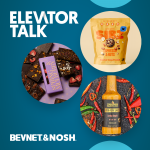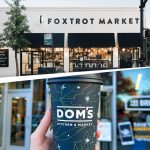The State of Snacking
While snacks have long been defined by in-between meal consumption, consumers increasingly utilize the small food servings as meal replacements, and entrepreneurs would be wise to take advantage of this expanding market.
Last month, IRI, a Chicago-based market research firm, along with consumer data analytics firm SPINS released its annual State of Snack Food Industry report, which covers current consumers’ sentiments on snacking, rising trends and market opportunities for manufacturers in the industry.
According to IRI, snack sales are projected to reach $200 billion in 2020 with the chief consumers being millennials and Baby Boomers.
Here’s a brief breakdown:
Consumers’ Sentiments and Interactions with Snacking

Shoppers’ sentiment on snacking has been on the rise since 2011, mainly due to improved economic factors. IRI found that shoppers are buying more snacks regardless of price and snacking more often throughout the day.
Here are some statistics on consumer snacking data compared to one year ago:
- Cutting back on snack spending: Down 16 percentage points
- Buying less variety of snacks to save money: Down 13 percentage points
- Paying more attention to price per serving: Down 10 percentage points
- Buying what’s on sale rather than favorite brands: Down 16 percentage points
- Snacking more frequently: Up 11 percentage points
- Treating indulgent snacks as comfort food: Up 8 percentage points
In addition, there were double-digit increases in nearly all periods of the day (early morning, morning, afternoon, evening, late evening) in which people snacked compared to 2010.
Snacking Trends

The trend in snacking, like everywhere else, has become much more customized and tailored to consumers’ needs. Whether those need states are the result of convenience, flavor, texture, or dietary preference, manufacturers appear to be addressing demand.
Consumers will see more health claims as snacks are becoming part of the eating and wellness plan for consumers. They will also see healthier snacks becoming more indulgent and indulgent snacks becoming healthier.
Entrepreneurs should take note of these trends and examine how they factor into the flavors, packaging, pricing and marketing for their own product:
- Consumers are looking to satisfy cravings for a variety of flavors and textures when they snack.
- Top 10 categories in unit sales growth include salty snacks, chocolate candy, yogurt crackers, non-chocolate candy, ice cream, snack bars, and nuts, seeds and corn nuts.
- Fifty-two percent of adults eat snacks as meals on-the-go if they have kids versus 24 percent without kids. (Think about packaging size and marketing opportunities.)
- Indulgent snacking (3.1 percent) outpaced healthy snacking (2.5 percent) in dollars sales growth this past year.
- Fifty-nine percent consumers say they indulge when snacking.
- Manufacturers are making indulgent snacks more permissible by having claims to nutritional requests: 71 percent growth in fiber claims, 51 percent in energy, 31 percent in vegan claims and 30 percent in natural sweetener claims.
- Indulgent snack winners include dry meat snacks, bakery snacks, and refrigerated wraps.
- 41 percent of consumers view snacking as part of a healthy eating plan throughout day.
- 50 percent consumers seek snacks beyond benefit basic nutrition.
- Top products going beyond basic nutritional claims with protein, calcium, fiber, and energy claims include nuts, yogurt pretzels, yogurt, hummus and fresh fruit smoothies.
- 27 percent of consumers prefer to eat more organic or organic-labeled products.
- Forty-five percent of younger millennials ages 18-24 and 43 percent of older millennials ages 25-34 eat snacks as meals at home.
- 41 percent of younger boomers ages 45-54 and 23 percent of older boomers ages 55-64 eat snacks as meals.
Manufacturers Capturing Growth Opportunities

IRI recommends a couple strategies for manufacturers to capture growth from the snacking industry. Many of these recommendations can be integrated into the strategies of newer brands and they include:
1) Coordinating Channel and Distribution Strategies
To capture growth from the snacks market, brands want to focus on giving the consumer what they want, when they want it and at the location they want it at. Here are some points for thought:
- Value-oriented channels have grown faster for snacking than traditional channels. Consumers are visiting dollar, drug, club, and the Internet for their snacking needs.
- In response to consumers’ focus on health, retailer are putting stricter manufacturing guidelines on their own private labels and brands looking to get in need to pay special attention.
- In terms of packaging size, large pack sizes seem to contribute to dollar sales growth in categories such as granola bars, cold cereal, corn nuts, dried meat snacks, and bakery items whereas small pack sizes, which offer convenience and mobility, seem to contribute to dollar growth in snacks such as non-chocolate candy, dried fruit, salt snacks, and crackers.
2) Finding Growth in Natural and Organics
Growth in natural and healthy snacking is apparent, but IRI recommends understanding the attitudes and behaviors of consumers, many of which buy or don’t buy natural and organic for varying reasons. Focus the strategy on educating the consumer and varying your assortments and price points to fit different shoppers’ needs.
- Non-GMO snacks grew 30.9 percent since last year.
- USDA organic snack products grew 15.3 percent since last year.
- Household penetration on conventional snacks are losing out to natural snacks.
- Drivers of top natural growth winners include “premiumtizing,” non-GMOs and ancient grains.
3) Contemporizing Your Brand Engagement
This strategy is all about gaining an understanding of how consumers engage with your product. By finding out when they make purchases, through which channels, and how and when they consume your product, you can build custom approaches to targeting consumers and their preferences.
- Millennials comprise of 19 percent of snack dollar sales. They value health, convenience, brand trust, and customization while baby boomers make up 41 percent of snack dollar sales and value wellness, convenience and customization.
- Top channels used to purchase snacks are mass, club, grocery, and the Internet for millennials versus drug, dollar, grocery, and club for older boomers.
- Sixty-four percent of millennials snack across the day versus 43 percent for younger boomers.
- The afternoon is where a majority of younger millennials (73 percent) and younger boomers (76 percent) eat their snacks.
- Millennials drive sales for organics while younger boomers drive sales for gluten-free, all natural, and high fiber.













